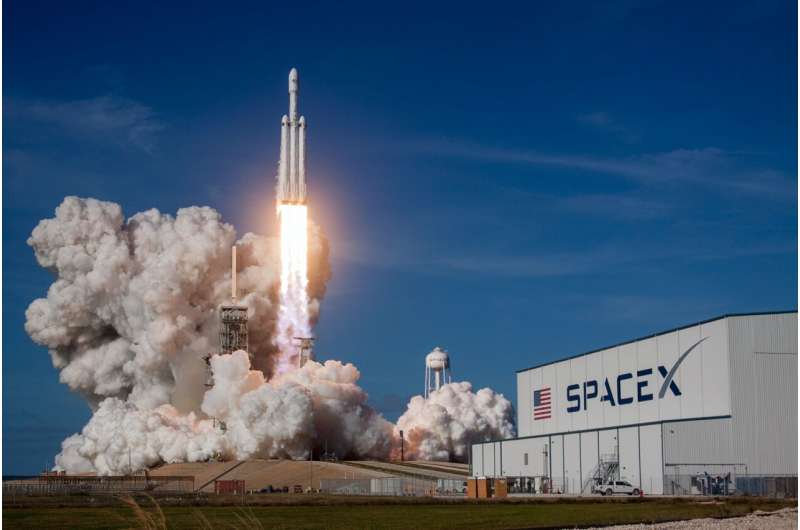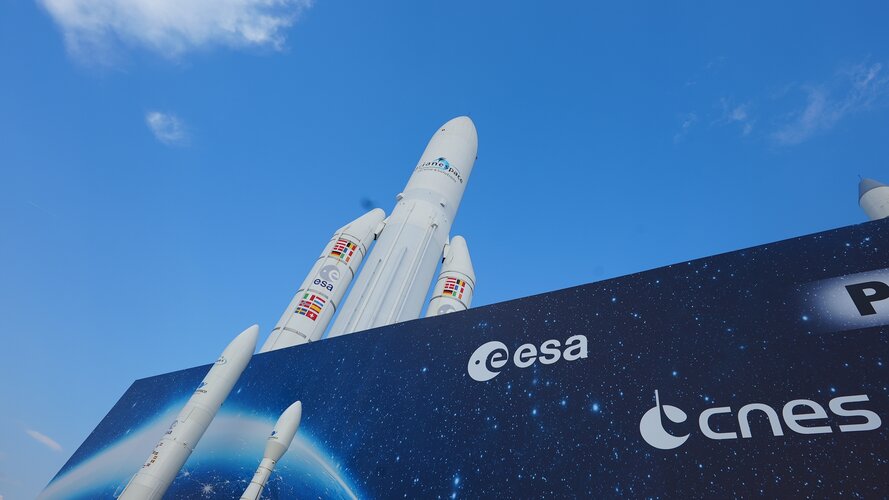
Copernical Team
D-Orbit secures four multi-million contracts with ASI and ESA
 Space logistics and orbital transportation company D-Orbit secured four multi-million contracts under the framework of Italy's National Recovery and Resilience Plan (PNRR). These contracts represent a great opportunity to take part in national projects that will mark historic milestones the space sector and cooperate with some of the most renown and innovative Italian companies in the industry.
Space logistics and orbital transportation company D-Orbit secured four multi-million contracts under the framework of Italy's National Recovery and Resilience Plan (PNRR). These contracts represent a great opportunity to take part in national projects that will mark historic milestones the space sector and cooperate with some of the most renown and innovative Italian companies in the industry. Rocket Lab to launch space object monitoring mission for Spire Global and NorthStar
 Rocket Lab USA, Inc. (Nasdaq: RKLB) has signed a dedicated launch deal with Spire Global (NYSE: SPIR) ("Spire") to deliver its first four Space Situational Awareness (SSA) satellites to low Earth orbit for its Space Services customer NorthStar Earth and Space Inc. ("NorthStar").
The dedicated mission on Electron will deploy the satellites to a 530km circular orbit from Rocket Lab Launch Co
Rocket Lab USA, Inc. (Nasdaq: RKLB) has signed a dedicated launch deal with Spire Global (NYSE: SPIR) ("Spire") to deliver its first four Space Situational Awareness (SSA) satellites to low Earth orbit for its Space Services customer NorthStar Earth and Space Inc. ("NorthStar").
The dedicated mission on Electron will deploy the satellites to a 530km circular orbit from Rocket Lab Launch Co Space tech to shrink as the limits of quantum physics are tested
 A UK-wide consortium is developing technologies to use nanoparticles as state-of-the-art sensors on small, shoebox-sized satellites known as CubeSats.
The Universities of Warwick, Swansea and Strathclyde have been awarded 250k pounds to further research into nanoparticles and quantum physics in the application of space technology.
Recent advances in the field of levitated optomechani
A UK-wide consortium is developing technologies to use nanoparticles as state-of-the-art sensors on small, shoebox-sized satellites known as CubeSats.
The Universities of Warwick, Swansea and Strathclyde have been awarded 250k pounds to further research into nanoparticles and quantum physics in the application of space technology.
Recent advances in the field of levitated optomechani Not Again, Mars: Sols 3868-3870
 Today we started planning at a location short of our intended drive end position. Mars has, once again, not read our script! Regular readers of this blog will have noticed lately that many reports start with some news about a shortened drive that didn't quite complete, and that Abigail got really excited on June 20th, when three drives in a row had completed successfully. And that's not the rove
Today we started planning at a location short of our intended drive end position. Mars has, once again, not read our script! Regular readers of this blog will have noticed lately that many reports start with some news about a shortened drive that didn't quite complete, and that Abigail got really excited on June 20th, when three drives in a row had completed successfully. And that's not the rove Ariane 6 revealed on its launch pad in preparation for hot-firing tests
 As part of the combined tests campaign, the Ariane 6 mobile gantry was retracted on June 22, unveiling the launch vehicle on its launch pad. During a rehearsal representative of a real launch sequence, the removal of the mobile gantry marks the completion of the functional tests performed so far and precedes ignition of the core stage Vulcain 2.1 engine on the launch pad. The rehearsal serves to
As part of the combined tests campaign, the Ariane 6 mobile gantry was retracted on June 22, unveiling the launch vehicle on its launch pad. During a rehearsal representative of a real launch sequence, the removal of the mobile gantry marks the completion of the functional tests performed so far and precedes ignition of the core stage Vulcain 2.1 engine on the launch pad. The rehearsal serves to Safran and Terran Orbital sign a MoA to produce satellite electric propulsion systems in US
 Safran Electronics and Defense and Terran Orbital (NYSE: LLAP) announced they have signed a Memorandum of Agreement to study and validate the prerequisites for production of a new generation of electric propulsion systems for satellites in the United States, based on Safran's PPSX00 plasma thruster.
Safran Electronics and Defense, via Safran Spacecraft Propulsion, and Terran Orbital will u
Safran Electronics and Defense and Terran Orbital (NYSE: LLAP) announced they have signed a Memorandum of Agreement to study and validate the prerequisites for production of a new generation of electric propulsion systems for satellites in the United States, based on Safran's PPSX00 plasma thruster.
Safran Electronics and Defense, via Safran Spacecraft Propulsion, and Terran Orbital will u Rocket Lab to Launch Multiple Satellites as Part of Upcoming Recovery Mission
 Rocket Lab USA, Inc. (Nasdaq: RKLB) reports that its next Electron mission will deploy seven satellites to space and include an attempt to recover the rocket's booster after launch. The 'Baby Come Back' mission, Rocket Lab's 39th Electron launch, is scheduled to deploy from Pad A at Rocket Lab Launch Complex 1 in Mahia, New Zealand during a launch window that opens July 14, 2023 UTC.
Rocke
Rocket Lab USA, Inc. (Nasdaq: RKLB) reports that its next Electron mission will deploy seven satellites to space and include an attempt to recover the rocket's booster after launch. The 'Baby Come Back' mission, Rocket Lab's 39th Electron launch, is scheduled to deploy from Pad A at Rocket Lab Launch Complex 1 in Mahia, New Zealand during a launch window that opens July 14, 2023 UTC.
Rocke The ship sank. Or did it? Titanic misinformation swirls
 The Titanic inspired a tear-jerking blockbuster and expeditions to its watery gravesite - including a fatal one this week - but viral TikTok videos peddle a stunning conspiracy theory: the ship never sank.
More than a century after it went down in the North Atlantic Ocean, wild myths and urban legends about the luxury liner have continued to swirl, including that it was doomed by the curse
The Titanic inspired a tear-jerking blockbuster and expeditions to its watery gravesite - including a fatal one this week - but viral TikTok videos peddle a stunning conspiracy theory: the ship never sank.
More than a century after it went down in the North Atlantic Ocean, wild myths and urban legends about the luxury liner have continued to swirl, including that it was doomed by the curse SpaceX tender offer values it at around $150bn: report

Elon Musk's company SpaceX is offering to sell insider shares at a price that lifts its valuation to around $150 billion, according to a Bloomberg News report Friday.
The company—the first private company to send astronauts into orbit, among many other firsts—is initially seeking a $750 million tender offer, the report added.
Its valuation has climbed in recent years as it raised billions to finance its work, and according to Bloomberg, SpaceX is offering shares at over $80 apiece.
A CNBC report in January noted that SpaceX was raising $750 million in a round of funding that valued it at $137 billion.
According to Bloomberg News, SpaceX has around $5 billion of cash on its balance sheet.
In April, SpaceX saw the most powerful rocket ever built—Starship—blow up on its first flight, although Musk congratulated his SpaceX team on the test of the next-generation spacecraft designed to send astronauts to the Moon, Mars and beyond.
SpaceX also successfully deployed more than 50 added satellites on Friday, boosting a collection used to beam broadband internet coverage, according to reports.
Paris Air Show 2023 – Highlights of the week
 Video:
00:01:40
Video:
00:01:40
From Monday 19 to Sunday 25 June, at the ‘Space Pavilion’ of Paris Air Show 2023, ESA and CNES present ambitious new projects in space exploration, astronautics, Earth observation and security-related applications.

